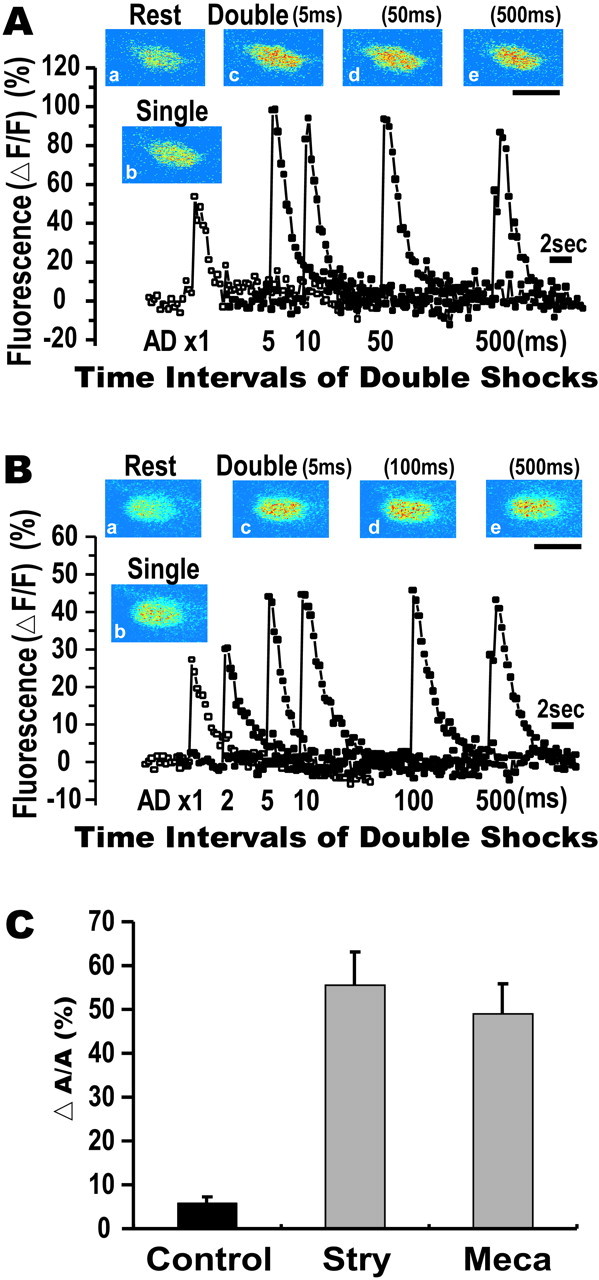Fig. 7.

Effects of blocking a recurrent inhibitory pathway. A, The inhibitory shunt of the Ca2+ response was totally eliminated after the glycinergic receptor blocker strychnine was injected to the tail of the intact zebrafish. Ca2+ responses were superimposed as in Figure 6A. Ca2+elevation in response to double AD shocks with a 5 msec interval was not reduced and resembled those obtained at intervals of 10–500 msec.Insets, Pseudocolor images of fluorescence intensity at rest (a) and after single shock (b) and double shocks at intervals of 5 (c), 50 (d), or 500 (e) msec. B, The inhibitory shunting of Ca2+ response was lost by injecting the nicotinic acetylcholine receptor blocker mecamylamine into the tail. Ca2+ increases in response to double shocks with intervals of 5–500 msec were constant. Insets, Pseudocolor images as denoted as in A. C, ΔA/A for the double AD shocks at interval of 5 msec in control and strychnine- and mecamylamine-injected fish. The inhibitory shunt (ΔA/A, 5.8 ± 1.6%; 25 fish; control) was significantly reduced in strychnine (ΔA/A, 55.4 ± 7.7%; 8 fish; p < 0.0001, t test) or mecamylamine (ΔA/A, 48.9 ± 6.9%; 11 fish; p < 0.0001, t test).
